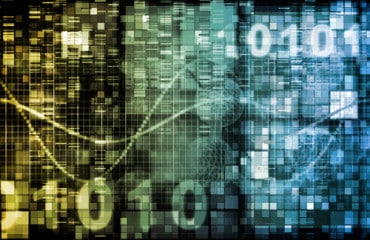
For most organizations, including devices and machines into their core business processes is a practice that’s long overdue. Here, RT Insights blogger David Linthicum describes the evolution of data integration with the Internet of Things, explaining why today’s data integration technology makes it easier than ever for organizations to get started with the IoT.
You can think of the Internet of Things (IoT) as the concept of having traditionally dumb devices (including thermostats, car ignition systems and even your power tools) beginning to communicate with systems outside of those devices. These systems gather information that the devices produce and then analyze that information to take action or just understand more about the device itself.
For example, my motorcycle gathers and transmits data by using devices that I integrated into the bike’s core systems including ignition, fuel management and transmission. The devices produce and store data which helps me to determine how the bike is performing, spot forthcoming problems and take preventative or corrective action.
This information can do a few things. It can prove direct feedback to the core systems on the motorcycle to proactively correct problems by using predirected processes (e.g., send a text message if the oil temp is out of range). Or the data is gathered en masse and analyzed to determine trends such as data that indicates that a failure to one of the air sensors is likely to occur in the near future. It’s handy to have these sorts of conversations with your motorcycle versus days gone by when you basically reacted to things as they failed.
If you understand this, even if you don’t own a motorcycle, you will understand what the IoT is all about. In place of my motorcycle, just substitute MRI machine, home thermostat, your car, an aircraft engine or an industrial robot and you’ll find that many of the concepts remain the same. Indeed, the data these devices and machines can create and transmit allows us to understand more about how these devices work and take proactive action to increase the value of using these devices and machines.
The data integration issues are much like the integration issues we dealt with back in the old days. IoT devices send data in very different formats by using very different interfaces. In many instances, they communicate with the outside world as an afterthought. Planning for integration, or failure to plan for integration, shows how well the devices participate within a data integration approach, and how well they work and play with data integration technology. While device and machine vendors now deliver application programming interfaces (APIs), those APIs have a tendency to be proprietary. Thus, you end up writing very different interfaces to communicate with the different IoT devices.
Thus, it’s prudent to assemble your data integration strategy. Be sure to include IoT devices and how the use of this technology will enhance your efficiency. For most enterprises, the ability to include devices and machines into the core business processes is something that’s long overdue. But the data integration technology is ready to get you there. It’s time you get started with the IoT!
Want more? Check out our most-read content:
Frontiers in Artificial Intelligence for the IoT: White Paper
Research from Gartner: Real-Time Analytics with the Internet of Things
How Real-Time Railroad Data Keeps Trains Running
Operational Analytics: Five Tips for Better Decisions
Why Gateways and Controllers Are Critical for IoT Architecture
Liked this article? Share it with your colleagues!




























